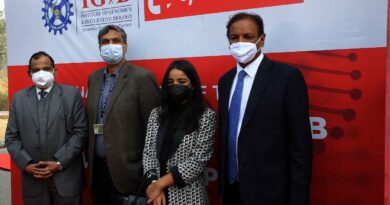GAGANYAAN: Manned Space Flight Approved By Govt
THE Union Cabinet chaired by Prime Minister Narendra Modi has approved Gaganyaan, the indigenous human spaceflight programme. The Gaganyaan spaceflight will carry three Indian astronauts for a minimum of seven days in space at a total cost of Rs 10,000 crore. Two unmanned flights and one manned flight will be undertaken as part of the programme, announcing the historic decision after Cabinet meet on Friday, Minister for Law and Justice Ravi Shankar Prasad told media persons ISRO’s Gaganyaan will help India become the fourth nation to independently send humans to space. The announcement of the Gaganyaan project was first made by Prime Minister Narendra Modi on India’s 72nd Independence Day – his fifth and final address in 2018 ahead of the next general elections. The space agency hopes to launch the first mission within 40 months. The plans in the “demonstration phase” includes undertaking two unmanned flights and one human flight using Indian technology to catapult a crew of three into a low earth orbit for 5-7 days.Dr K Sivan, Chairman of the Indian Space Research Organisation (ISRO), commenting on the 2022 deadline, had earlier said it was a “very, very tight schedule but ISRO will do it.” India has inked agreements with Russia and France for assistance in Gaganyaan.Three Indian astronauts will be sent to space for up to seven days by 2022.”Announced by Prime Minister Narendra Modi on August 15, the total fund requirement for the Gaganyaan Programme is within Rs 10,000 crore and includes cost of technology development, flight hardware realisation and essential infrastructure elements. Two unmanned flights and one manned flight will be undertaken as part of the program. The Indian Space Research Organisation (ISRO) will collaborate extensively with various national agencies, laboratories, academia and industry to accomplish the Gaganyaan Programme objectives. While the ISRO will be responsible for realising the flight hardware through industry, national agencies, laboratories and academia will participate in crew training, human life science technology development initiatives as well as design reviews.First human space flight demonstration is targeted to be completed within 40 months from the date of sanction. Prior to this, two unmanned flights in full complement will be carried out to gain confidence on the technology and mission management aspects.The ambitious programme will also allow pooling in of diverse technological and industrial capabilities and enable broader participation in research opportunities and technology development. It is also expected to spur research and development within the country in niche science and technology domains and provide huge potential for technology spinoffs in areas such as medicine, agriculture, industrial safety, pollution, waste management, and water and food resource management, among others. The ISRO has completed the development of launch vehicle GSLV Mk-lll which has the necessary payload capability to launch a three-member crew module in low earth orbit. It has also tested the crew escape system which is an essential technology for manned space flight.The aerodynamic characterisation of crew module has been completed as part of GSLV Mk-lll X mission flight. Elements of life support system and space suit also have been realised and tested. In addition, the orbital and re-entry mission and recovery operations have been flight demonstrated in Space Capsule Recovery Experiment (SRE) mission. India plans to call its astronauts “Vyomnauts” since “Vyom” in Sanskrit means space.Till date, ISRO has spent Rs. 173 crore developing critical technologies for human space flight. The plan was first pitched in 2008 but was put on the backburner as the economy and Indian rockets experienced setbacks. Meanwhile, SRO has done successful missions to the moon and Mars, and has another mission to the moon planned for early next year along with an exploratory mission to the sun.




